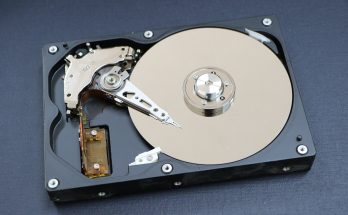Hard drives are very important for computers. They store our files, photos, and videos. But sometimes, hard drives can get damaged. One big problem that can happen is called a head crash. This can lead to losing important data.
In this article, we will learn what a head crash is, how to tell if it’s happening, and what you can do about it.
What is a Head Crash?
A head crash happens when the read/write head of a hard drive touches the spinning disk inside. The read/write head is a tiny part. It reads and writes data. If it touches the disk, it can scratch it. This can cause serious damage. A head crash can lead to losing files and data.
There are many reasons why a head crash can happen. Sometimes, it is because of physical damage. Dropping the hard drive can cause it. Other times, it can happen due to problems made during manufacturing. If the hard drive is not made well, it can fail.
Signs of a Head Crash
If you think your hard drive is having a head crash, look for some signs. Knowing these signs can help you catch the problem early.
Unusual Noises
One of the first signs is strange noises. If you hear clicking, grinding, or buzzing sounds, it might be bad news. A normal hard drive is quiet. If it starts making noise, you should worry. These sounds can mean that the read/write head is not working right.
Performance Issues
Another sign is slow performance. If your computer starts acting slow, it could be a hard drive issue. You may notice that files open very slowly or not at all. Sometimes, programs may freeze or crash. If this happens, it’s a sign that your hard drive might be failing.
Error Messages
You may also see error messages. These can pop up when you try to open files. Common messages include “Disk not found” or “Data error.” If you see these messages, take it seriously. They are signs that your hard drive may have problems.
Diagnosing a Head Crash
If you notice any of these signs, you need to diagnose the problem. Here are some ways to do that.
Visual Inspection
Start with a visual check of your hard drive. Look for any physical damage. Check for scratches, dents, or anything unusual. If you see damage, it could be a problem. But do not try to open the hard drive. This can cause more harm.
Using Diagnostic Tools
Next, you can use diagnostic tools. There are many software programs you can download. These tools can check the health of your hard drive. They can scan for errors and show you any problems. Some popular tools are CrystalDiskInfo and HD Tune. Download one of these and run a scan.
SMART Data Analysis
Another way to check your hard drive is by looking at SMART data. SMART stands for Self-Monitoring, Analysis, and Reporting Technology. Most modern hard drives have this feature. It keeps track of the health of your drive.
You can find this information in the diagnostic tools. Look for numbers like “Reallocated Sector Count” and “Current Pending Sector Count.” If these numbers are high, your hard drive might fail soon.
Steps to Take if You Suspect a Head Crash
If you think your hard drive has a head crash, you must act quickly. Follow these steps:
Immediate Actions
First, stop using the hard drive immediately. Using it more can cause more damage. Turn off your computer and unplug the hard drive. Do not try to fix it yourself. This can lead to losing data.
Data Recovery Options
Next, think about data recovery options. If your data is very important, you might want to hire a professional. Data recovery services can help you get your files back. They have special tools to fix hard drives. But this can be costly.
If you want to try to recover the data yourself, you can use data recovery software. Programs like Recuva or EaseUS Data Recovery Wizard can help. Follow the instructions to scan your drive for lost files.
Prevention Tips
After dealing with the issue, think about how to prevent it from happening again. You don’t want to face a head crash twice. Here are some tips to keep your hard drive safe:
- Regular Backups: Always back up your data. Use an external hard drive or cloud storage. This way, if something goes wrong, you can get your files back.
- Proper Handling: Be careful with your hard drive. Don’t drop it or shake it. Make sure to store it in a safe place.
- Routine Checks: Check your hard drive often. Use diagnostic tools to look for issues. If you find problems early, you can save your data.
Conclusion
Identifying a head crash in hard drives is very important. Knowing the signs can help you act fast. If you hear strange noises or see error messages, check your hard drive.
Use diagnostic tools to find out what is wrong. If you suspect a head crash, stop using the drive right away. Consider data recovery options to save your files.
Remember to back up your data regularly. This can save you from losing important information. By following these steps, you can protect your data and avoid loss.
FAQs
1. What causes a head crash?
A head crash can be caused by physical shocks, like dropping the hard drive, or by problems made during the manufacturing process.
2. How can I recover data from a head crash?
You can try using data recovery software or hire a professional data recovery service to help you recover lost files.
3. How can I prevent a head crash?
To prevent a head crash, always back up your data, handle your hard drive carefully, and check it regularly for issues.



